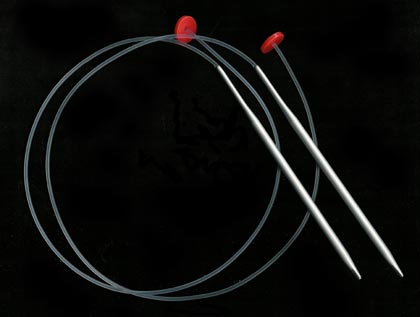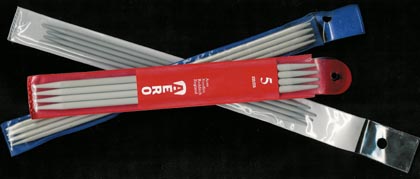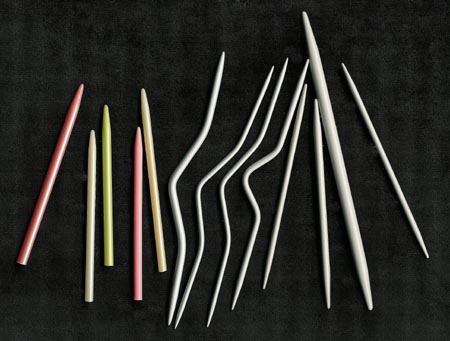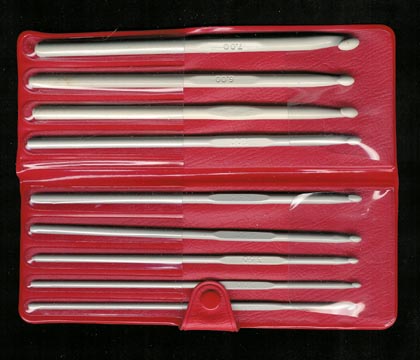2: Needles &
Accessories (cont.)
3.Button
ended needles can be used for any kind of flat knitting, and as they
are usually quite long, are wonderful when a large number of
stitches have to be worked. The only problem with these needles is
that the knitting hanging on the plastic extensions tends to twist
around under your hands as you are working, and the plastic strands
curl. Run very hot water over the plastic and hold the extension
straight until it cools and the problem will be lessened.

4.
Double pointed needles have no substitute if
you make garments that have a neck, cuffs or bands that are worked
after the seams of the garment have been joined. They are the only
needles to use for classical caps, gloves, socks or stockings. As
they are not usually marked you need a needle gauge (see 18).

5.
Collect all possible shapes and sizes in
cable needles. Keep the pointed end of a broken needle. Use it for a
cable needle. So that cable needles donít fall out of your knitting,
use a larger size than the other needles being used for the garment.
You will also find that this will stretch the crossed over stitches
and make them easier to knit.

6.
A complete set of crochet hooks gives you
the chance to find the correct size to use for any crochet trim.
Usually, unless you are trying to gather an edge, or make it
smaller, match the hook size to the needle size.
Loop buttonholes are easy to make with a crochet hook, and there is
nothing better to use to pick up dropped stitches (see
here).

NEXT PAGE>>
chapter page: 1 | 2 |
3 | 4 |
5 | 6 |
7 | 8 |
9 | 10 |
11 | 12
|